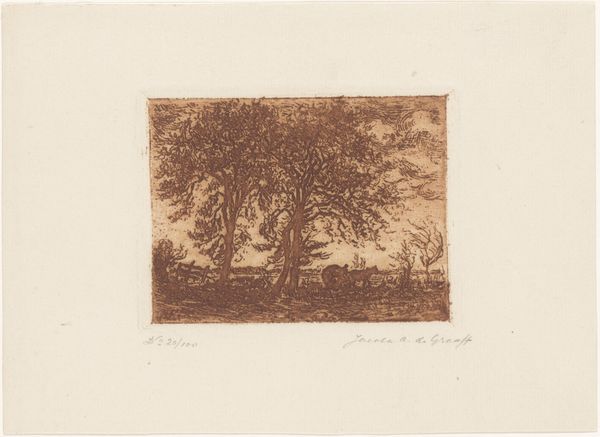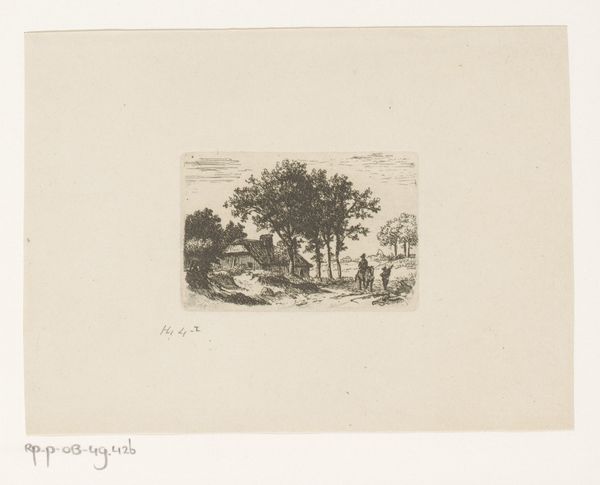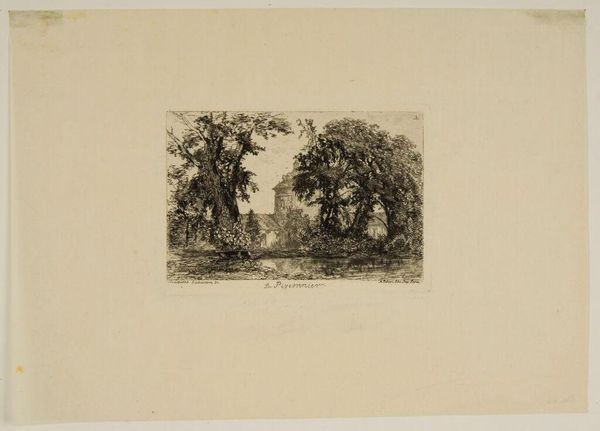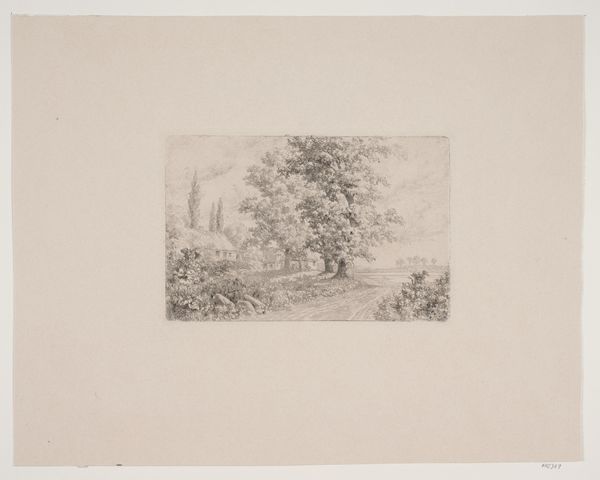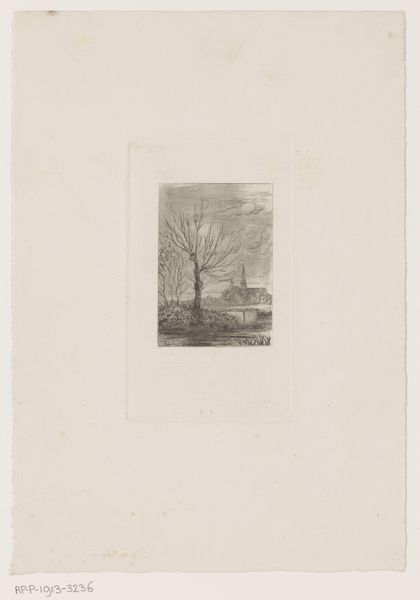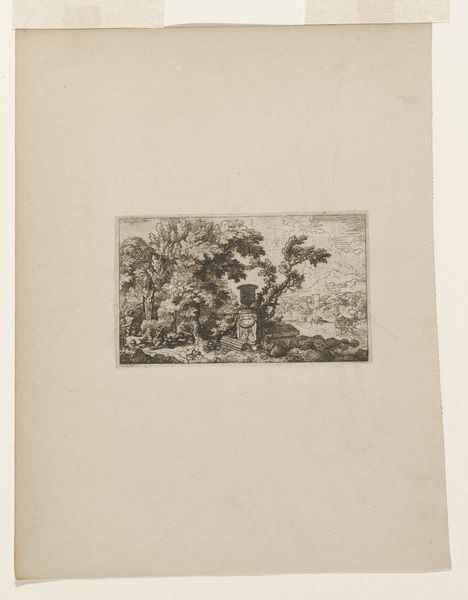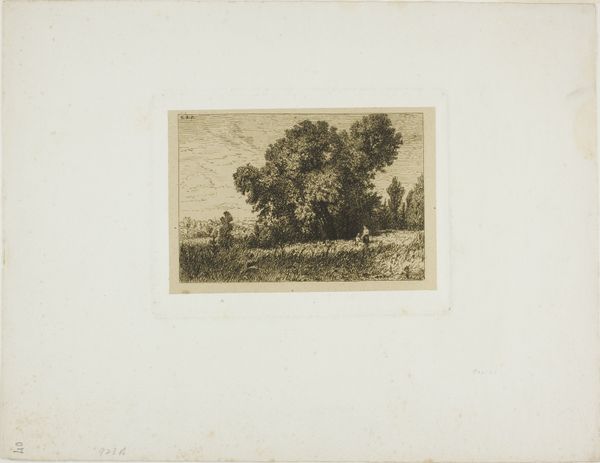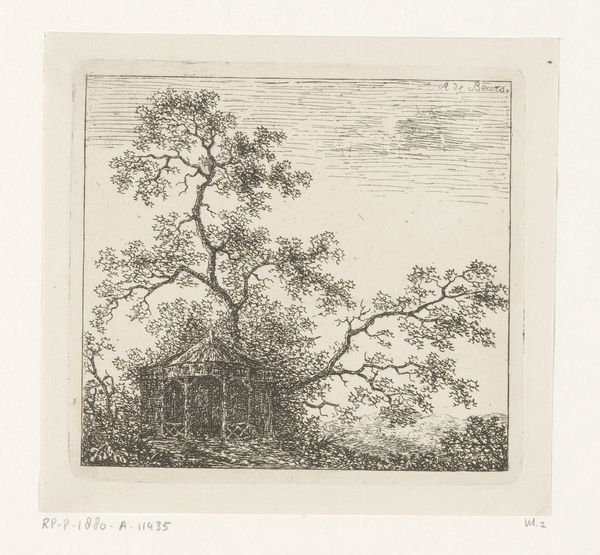
Boom met een afgebroken top, een herder rechts op de voorgrond 1812 - 1832
0:00
0:00
drawing, etching, paper, ink
#
drawing
#
narrative-art
#
etching
#
landscape
#
figuration
#
paper
#
ink
#
romanticism
Dimensions: height 79 mm, width 96 mm
Copyright: Rijks Museum: Open Domain
Editor: Here we have "Tree with a broken top, a shepherd in the right foreground," an etching in ink on paper, created sometime between 1812 and 1832 by Andr\u00e9 Paul de Beurs-Stiermans. I'm immediately struck by the loneliness of that broken tree, how it dominates the composition even with its imperfection. What do you make of the shepherd in relation to this central image? Curator: That shepherd! He's almost swallowed up by the scene, isn’t he? De Beurs-Stiermans places him there, in the lower right corner, a tiny observer amidst nature's grandeur... and fragility. The broken tree speaks volumes, doesn't it? A romantic symbol, perhaps, of life's impermanence. Think of it: Romanticism relished in the sublime, in nature's overwhelming power, but also in the poignancy of ruins and decay. That broken top is not just damage, it's a visual metaphor. How does it speak to you? Editor: It feels a little melancholic, to be honest. The shepherd seems small and insignificant, almost as if dwarfed by the tree's struggle. Curator: Precisely! The artist plays with scale, underscoring humanity's fleeting presence against the enduring backdrop of nature. The tree *has* survived though, and there's still life around it; look at those smaller trees clustered together. What do you make of that choice, visually and emotionally? Editor: I suppose that even though the tree has broken, it’s still standing. It's almost as though it represents hope within loss. Curator: Ah, exactly! See how the artist leads you down the path of personal reflection, connecting you to the natural world... to your *own* world. That, in essence, *is* Romanticism. Editor: That's a great way to see it, and that helps frame the historical and emotional context. Thank you. Curator: My pleasure! And thank *you* for opening up a fresh perspective on this intriguing work.
Comments
No comments
Be the first to comment and join the conversation on the ultimate creative platform.



